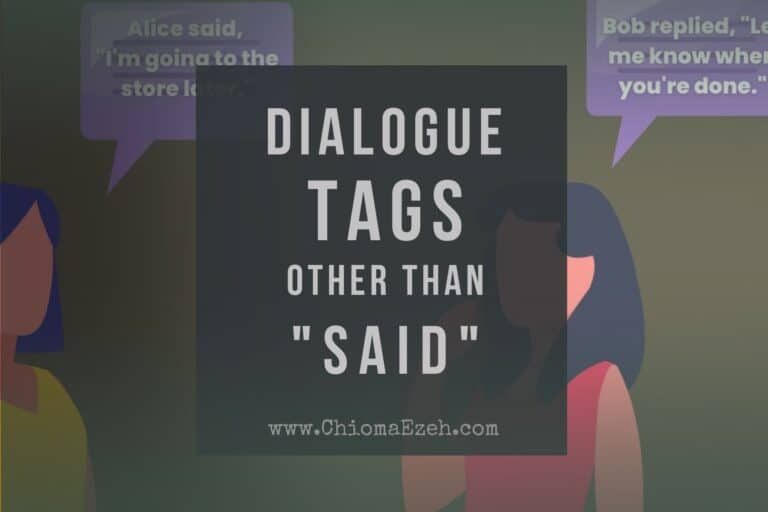Outlining In Writing: 6 Easy Steps For Success [With Formats]
When it comes to outlining – whether it’s a book or article, having a plan is essential. Outlining your work can help you create a clear tone of writing and voice, while also ensuring that your message resonates with your intended audience.
Going from idea to complete manuscript is a race many authors never complete. Somewhere along the way, writer’s block hits, or they become overwhelmed. That doesn’t have to be you. Outlining in writing will ensure that it will not be you.
And while many different kinds of tools and software seem to help overcome this, from AI-driven apps to collaboration platforms – where do you start? This guide is going to show you how to outline, along with tips, examples, and exercises to help get you started. So let’s dive in!
See our full guide: The Writing Process: 6 Steps With Tips, Examples, And Worksheets
Let’s Talk
Are you a writer aspiring to pen a masterpiece that never fails to captivate? Look no further. Reach out to us and uncover how we can help you to take your writing to unprecedented heights!

What is outlining in writing?
Outlining comes immediately after the research/brainstorming stage and before the drafting stage of the writing process. Outlining refers to techniques authors use to map out what they are going to write about. This usually takes the form of a detailed format that includes all the points a piece of writing is going to cover.
Outlining in writing is defined as the process of organizing key ideas and information into a structured format. Outlining determines that ideas are logically arranged and presented in a way that allows readers to easily follow and understand the main points. Outlines can come in many different forms and can include topics, key points, or sub-points.
Organizing ideas in an outline often makes it easier to connect related concepts. A good outline is so detailed, as it includes all the necessary points in the written work. With a good outline, the only thing you need to do is write during the drafting phase. You don’t even need to think about what to write, because all the points you need to discuss will be in the outline.
Why is Outlining in writing Important?
Outlining saves you time, unnecessary effort, and extra work that results from not outlining. Here are some more reasons writers use outlines:
- Outlines help you organize your thoughts, provide structure, and create a plan of action for writing.
- Outlines allow you to start compiling your sources before you start writing.
- Outlines help you present your written work in a way that makes sense
- An outline helps you see if your idea is strong enough to become a complete work.
- Using an outline helps to easily identify which parts of your work need further explanation or clarification
- Publishers sometimes require a proposal that includes an outline before requesting your manuscript, especially for non-fiction authors. sometimes require a proposal that includes an outline before requesting your manuscript, especially for non-fiction authors.
Guidelines For Writing An Outline
Your outline should be clear and distinctively differentiate between the various parts of your book. For instance:
- Number your chapters.
- Assign each sub-section of a chapter a letter.
- Each paragraph can be a roman numeral.
- The various arguments you want to make in each paragraph can be bullets.
Other writers instead prefer the following system:
- Roman numerals for main topics and chapters.
- Capital letters for paragraphs.
- Arabic numerals for points and sub-points.
- Lowercase letters can be used for specific details.
Any system you use is fine, as long as it makes sense to you.
Related Reading: How To Outline A Book: 6 Simple Steps with Templates & Examples
How To Structure An Outline (6 Steps)
Here are five steps you can use to structure your outline:
- Research And Brainstorm (for non-fiction and creative writing respectively)
- Gather And Organize Ideas
- Detail Your Points
- Decide the Best order of points
- Fill In Supporting Details (such as quotes, links, and sources)
- Revise Outline
#1. Research And Brainstorm
Fiction authors will brainstorm while non-fiction writers research. The aim of both is to start building up your ideas.

Research refers to any actions an author takes to get more information on a given topic. You might consult experts, library books, and online sources. Pay special attention to ideas that are not fully explained and gaps in existing literature. People are more interested in reading unexplored ideas than they are in old topics that have been tackled ad nauseam.
Here are some things to keep in mind when researching:
- Researchers should always check if the sources they are reading are credible.
- Jot down notes as you research.
- Rather write down your ideas, instead of keeping them in your head.
- Do this until you are satisfied.
On the other hand, brainstorming is the process of coming up with as many ideas as possible. A fiction author can come up with a setting and brainstorm several ideas about the setting. For instance, a phrase like “an abandoned boathouse by the lake” is enough to get many authors started.

I could brainstorm the phrase “Abandoned boathouse by the lake” and come up with several tangential ideas like:
- Fishing
- Fishermen
- Floating homes
- Waterfront location
- Old fishing dock
- Offshore
- Sailors preparing to set sail
- Crumbling walls
- Boards rotting away
- Broken windows
- Mystery
And I could go on to develop a summary like this:
The abandoned boathouse is a haunting sight, conjuring images of forgotten stories and lost memories. This beautiful—yet somewhat eerie—structure is common at the Beachem waterfront location, near the community’s old fishing dock. It is now a sad sight, a testimony of a bygone era when waterfronts were a hub of activity. It was once a place filled with life and vitality, bustling with fishermen and sailors preparing to set sail on their great adventures. But now it stands empty, overtaken by the elements and time. The boathouse was left to decay for decades, its paint chipping, walls crumbling, boards rotting away and windows broken. It has become a ghostly reminder of the days that have long passed. It is now an atmosphere of mystery and intrigue, as you imagine what stories may have taken place within its walls.
For Non-fiction, let’s use the topic: How To Get Published, let’s see how we can research and brainstorm below:
Title: How To Get Published
“There are three primary paths to getting published:
- Find a traditional publisher who will offer you a book contract. “This is what most writers have in mind when they think of publishing their book.
- Hire a company to help you publish your book. There are thousands of publishing services out there, some cheap and some expensive. But the main thing they have in common is that they charge the author to publish. This includes hybrid publishers, assisted publishers, and publishing service companies.
- Self-publish. This is where you the author act as the publisher and hire the help you need to publish and sell your work, most often through Amazon and other major retailers.” https://www.janefriedman.com/start-here-how-to-get-your-book-published/
The purpose of this step is to generate ideas. No research simply means no ideas at worst, and mediocre ideas at best.
Tips
Always read the literature review and reference pages of every source you read. It’s always better to read the original paper/research.
#2. Gather and organize ideas
With your research and brainstormed ideas in hand, it’s now time to start narrowing things down. You’ve been jotting down notes as you researched. Your notebook is probably full of ideas from your brainstorming session. You now need to choose which idea you will go with. For non-fiction authors, you need to narrow down the areas you are going to write about.

Ask yourself these questions as you organize your ideas:
- Do people want to read about this?
- Why does the idea matter?
- Is there enough research on the topic?
- Has it been done before?
- Do you have the expertise to authoritatively write about the topic?
For example, using our earlier topic on “How To Get Published”, we can gather the following ideas:
Gather and organize ideas:
- Traditional publisher
- Publishing companies
- Self-publishing
- Self-Publishing companies
- How to self publish
- Publishing services
- Self-Publishing School
- Reedsy
- Audiobook services
Note that you need ideas before you can start writing. It is impossible to skip this step.
Tips
It’s easy to get carried away by a new idea. Always give it a week or two to see if you are still interested in the topic before starting. In addition, there’s nothing wrong with consulting other people. Non-fiction writers might in fact benefit from getting a second opinion from experts.
#3. Detail Your Points
Now that you’ve organized your ideas, begin detailing out each point. Try to provide enough detail so that readers understand your points, but don’t overwhelm them with too much information. It should have enough information but still, be scannable at first glance.
For example, under the section “Self-publishing”, you can add more details like the cost of self-publishing, the benefits, and the drawbacks. Or for “How to self-publish”, you can include self-publishing platforms like Amazon KDP, Lulu, Ingamspark, etc
Detail Your Points
- Traditional publisher
- Self-publishing
- Cost of Self-publishing
- Benefits and Drawbacks
- How to self publish
- Amazon KDP
- Ingramspark
- Draft2Digital
- Lulu
- Publishing services
- Self-Publishing School
- Reedsy
- Audiobook services
This is an opportunity to mind map and try to add details that might be missed or skipped when you begin to write.
Tips
Try to add only relevant details that still emboldens the idea behind the main point. Try not to use too many words and make it too explanatory. This can get wordy and off-putting.
#4. Decide on the best order of ideas/topics
Most forms of writing, including books, are sequential. They are read from beginning to end. It is therefore important to place topics for discussion in the right sequential order. For fiction authors, this means deciding what happens first, second, third, and so on. For non-fiction authors, it means picking an order that makes sense to the reader.

Please note, you should already be thinking of your ideas and points in terms of chapters and paragraphs.
These questions can help you structure your ideas:
- What does the reader need to know first?
- Can the reader understand X without understanding why?
- Will putting Y next to Z confuse the reader?
Using the same example, for the topic “How To Get Published”. Is it okay to write “History of publishing” first and then write about “Traditional Publishers” and “Self-publishing” next?
Order the Ideas
- I. Introduction to publishing.
- 1. History of publishing
- A. First published book
- B. The first author.
- C. How was the first book published?
- D. How well was it received?
- 1. History of publishing
- II. Traditional publishers
- III. Self-publishing
- 1. Cost of Self-publishing
- 2. Benefits and Drawbacks
- 3. Self-Publishing companies
- A. Amazon KDP
- B. Ingramspark
- C. Draft2Digital
- D. Lulu
- IV. Publishing services
- Self-Publishing School
- Reedsy
- V. Conclusion
Not that it’s always possible to change the order of ideas. But moving passages between chapters after you are done writing can take up much of your time.
Tips
Tips
Develop your own system for organizing where what goes. You could also use the alphanumeric system defined earlier on in this guide. You can do something similar for fiction. For example, swop sub-sections for scenes.
#5. Fill in Supporting details
If an outline is like a skeleton, it’s now time to strengthen your skeleton. During your research, you came across sources you’d like to include in your draft. Start adding those sources at this stage in the relevant places from the structure you created above. Add quotes, citations, etc., where you will likely use them in your draft.

Fiction authors can start adding action phrases where necessary here. If you want to include specific iconic words, you might as well include them here. This step reduces the amount of work you need to do later on. If you already have your quotes and citations, you don’t need to spend half an hour searching for a quote of fewer than twenty words.
For example, let’s assume we want to fill in the details for the section: “Traditional Publishers”, our outline may look like this:
Fill in the details:
- II. Traditional publishers
- 1. Definitions
- 2. How does traditional publishing work?
- A. “In a traditional publishing arrangement, publishers assume all costs and pay you an advance and royalties. You must persuade them to accept your work by submitting an effective pitch or manuscript.” – (Friedman, 2017)
- a. Why is it called traditional publishing
- B. Examples of traditionally-published books
- A. “In a traditional publishing arrangement, publishers assume all costs and pay you an advance and royalties. You must persuade them to accept your work by submitting an effective pitch or manuscript.” – (Friedman, 2017)
As you can see, adding quotes, sources and other tiny details (that can easily be forgotten during writing) makes sense at this stage.
Tips
Tips
It might be a good idea to already familiarize yourself with your publisher/organization’s style guide. Using the organizational style guide will save you tons of editing time down the road.
#6. Revise the outline
Revisions just don’t start when you are done drafting your work. They start right now during the outlining phase.
Your outlines need to be revised. If you discover some points are confusing or lack enough evidence, remove them. Rearrange paragraphs you think will look better next to other paragraphs. You can also add items you think are lacking in the outline.
Not revising your outline means you might end up finding out that your topic is not researchable three months after starting.
Tips
Tips
Ask someone to look at your outline and give you a second opinion. If you already have an editor, they might be interested in seeing it. Try to take a few days away from the project. Then come back to look at the outline with new eyes.
Outline Structure Format Example: How Does It Look Like?
There are several ways of creating outlines. Here is what a complete outline might look like:
Fill in the details:
Full outline:
- I. Introduction to publishing.
- 1. History of publishing
- A. First published book
- B. The first author.
- C. How was the first book published?
- D. How well was it received?
- II. Traditional publishers
- 1. Definitions
- 2. How does traditional publishing work?
- a. “In a traditional publishing arrangement, publishers assume all costs and pay you an advance and royalties. You must persuade them to accept your work by submitting an effective pitch or manuscript.” – (Friedman, 2017)
- a. Why is it called traditional publishing
- B. Examples of traditionally-published books
- a. “In a traditional publishing arrangement, publishers assume all costs and pay you an advance and royalties. You must persuade them to accept your work by submitting an effective pitch or manuscript.” – (Friedman, 2017)
- III. Self-publishing
- 1. What is self-publishing?
- A. Cost of Self-publishing
- B. Benefits and Drawbacks
- 2. How to self publish
- A. Amazon KDP
- B. Ingramspark
- C. Draft2Digital
- D. Lulu
- 1. What is self-publishing?
- IV. Publishing services
- 1. What are self-publishing services?
- 2. Can self-publishing services be trusted?
- A. Reasons not to trust publishing services.
- B. Reasons to trust publishing services.
- 3. How to publish with Publishing Services.
- A. Self-Publishing School
- B. Reedsy
- V. Conclusion
- A. Executive summary of all points.
Outlining Activities & Worksheets
Practice makes perfect. While we’re far from being perfect, here are some exercises to make sure you grasped the important concepts.
- Research content for a topic of your choice.
- Try to brainstorm ideas for a story, such as a kid’s short story.
- Select ideas you think are worth tackling in 1.
- Organize 3 into what you hope will be the final coherent order.
- Fill in the missing details for 3 and 4.
- Come back to your outline after a week. Are there any changes you now want to make?
Tips For Writing A Helpful Outline
There are no hard rules when it comes to outlining in writing. The only exception is to follow any requirements your organization/publisher demands. These have to be followed unless you agreed otherwise with your supervisor/editor.
Below are additional tips for creating a helpful outline:
1. Know your objectives: Before you start outlining, know what goal you are trying to achieve with the outline. Are you outlining a book, presentation, or essay? What do you want to accomplish with it? Knowing this information beforehand will help ensure that your outline is focused and helpful.
2. Start with a broad overview: Begin by writing a short overview that summarizes the main ideas of your outline. This can be as simple as one sentence or a few paragraphs.
3. Divide into sections: Once you’ve written an overview, begin to divide your outline into sections based on topics and subtopics. Make sure each section is clearly labeled so readers know what topic it covers.
4. Detail your points: Now that you’ve divided your outline into sections, begin detailing out each point. For example, if you are outlining a presentation on the “History of Jazz”, each section could include points such as “Origins of Jazz” and “Influential Musicians”.
5. Include supporting information: Outlines should also include any additional information that supports each of your points and sub-points. Using the same example on “History Of Jazz”, you can include relevant facts like “Jazz originated in New Orleans in the early 1900s” or “Thelonious Monk was an influential jazz pianist”.
6. Add relevant sources: When writing an outline, it is important to include references from credible sources. This will make your paper more convincing and reliable for the reader.
7. Check for accuracy: Before you finish, make sure all of the information in your outline is accurate and up-to-date. If not, make the necessary changes to reflect the accuracy of your points.
8. Review for clarity: Once you’ve checked for accuracy, read through your outline again to make sure it is easy to understand. Are your points clearly stated? Does the order of information make sense? Are there any sections that need more detail? Once you get these nailed down, you’ll find out that your outline is helpful and clear.
By following these tips for writing a helpful outline, you can ensure that your outline is clear and organized, making it easier for others to understand and use. With a few simple steps, you can create outlines that will make writing or presenting much easier!
Can You Use AI Content Tools when outlining in writing?
AI content tools refer to a number of applications that can partly or fully craft content. Using AI tools to develop an outline is a bad idea. A piece of software will never be able to grasp nuances such as the writer’s expertise, the gap in existing literature, or whether the points being made are something someone would be interested in.
However, you can use them to generate “additional ideas”. These are ideas that might have been missed during brainstorming.
FAQs On Outlining In Writing
Is an outline compulsory?
A detailed outline is recommended but not compulsory for fiction authors. On the other hand, it is usually a necessity for non-fiction authors.
Not having an outline probably means you haven’t done your research, and you don’t have a good idea about what you are writing on. In addition, some organizations might ask you to submit an outline before you start writing.
Help: what if I am a pantser?
Pantsers, also known as gardeners, are fiction authors who don’t plan their novels ahead of time. They just go with the flow. Being a pantser is fine. That said, having a short outline that includes the beginning, middle, and ending is still a good idea.
Can I make changes to my outline later on?
Yes you can. In fact, outlines make it easier to implement changes. When you make a change during the drafting stage, you can go back to your outline to make sure the new change does not cause contradictions.
Final Word On outlining in writing
Outlining in writing is the process of creating a framework/template for your first draft. Steps in the outlining stage include researching, brainstorming, gathering ideas, organizing points, and revising.

![6 Powerful Elements Of Dialogue Writing [Tags, Action Beats, Subtext & More]](https://chiomaezeh.com/wp-content/uploads/2023/03/Elements-of-dialogue-writing-768x512.jpg)




